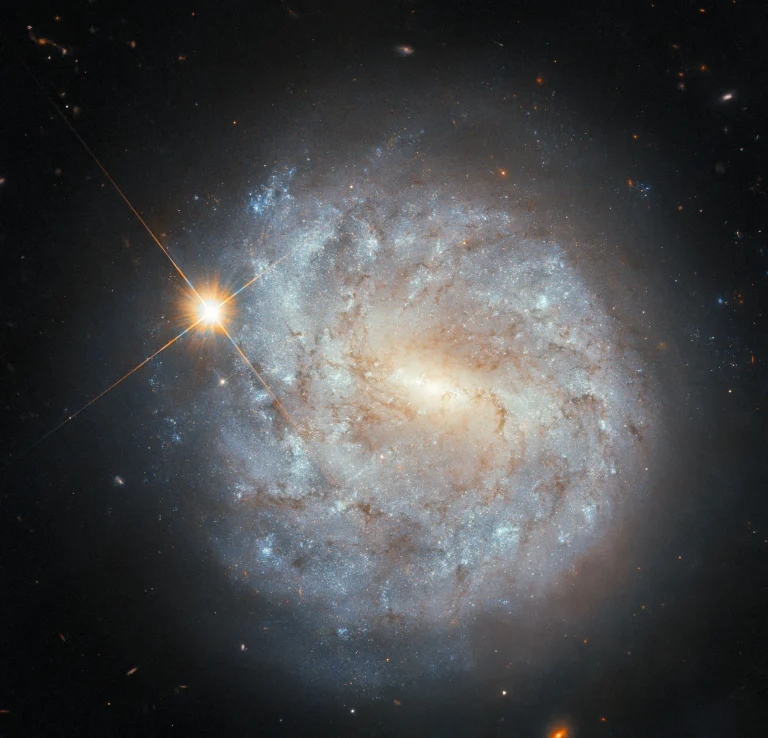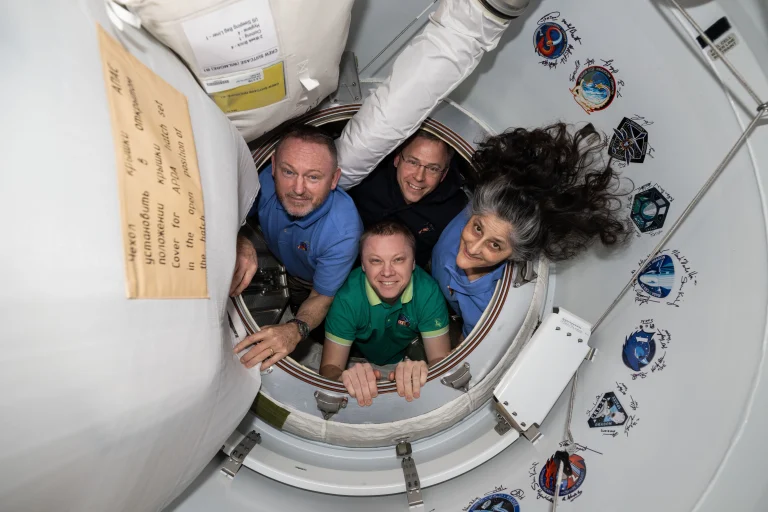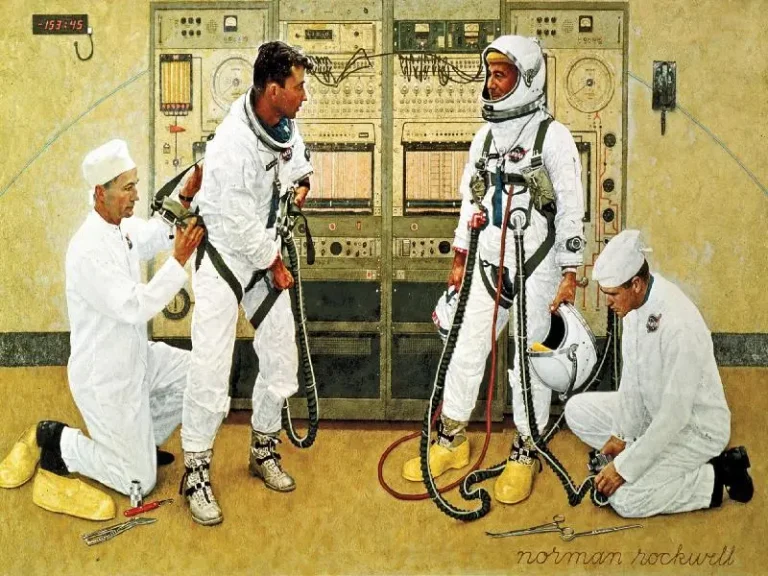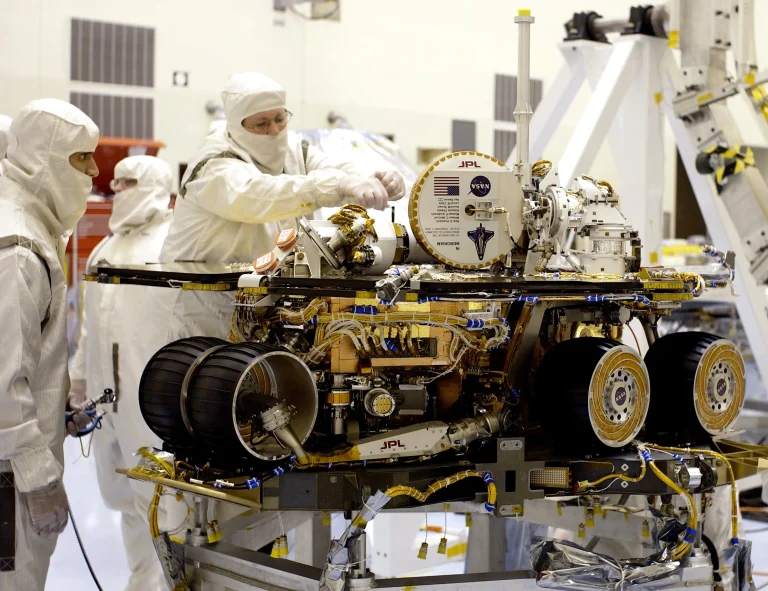ESA/Hubble & NASA, I. Chilingari
The subject of this NASA/ESA Hubble Space Telescope image is situated in the Perseus Cluster, also known as Abell 426, 320 million light-years from Earth. It’s a barred spiral galaxy known as MCG+07-07-072, seen here among a number of photobombing stars that are much closer to Earth than it is.
MCG+07-07-072 has quite an unusual shape for a spiral galaxy, with thin arms emerging from the ends of its barred core to draw a near-circle around its disk. It is classified as an SBc(r) galaxy: the c denotes that its two spiral arms are loosely wound, each only performing a half-turn around the galaxy, and the (r) is for the ring-like structure they create.
Rings in galaxies come in quite a few forms, from merely uncommon, to rare and scientifically important! Lenticular galaxies are a type that sit between elliptical and spiral galaxies. They feature a large disk, unlike an elliptical galaxy, but lack any spiral arms. Lenticular means lens-shaped, and these galaxies often feature ring-like shapes in their disks.
Meanwhile, the classification of “ring galaxy” is reserved for peculiar galaxies with a round ring of gas and star formation, much like spiral arms look, but completely disconnected from the galactic nucleus — or even without any visible nucleus! They’re thought to be formed in galactic collisions. Finally, there are the famous gravitational lenses, where the ring is in fact a distorted image of a distant, background galaxy, formed by the ‘lens’ galaxy bending light around it. Ring-shaped images, called Einstein rings, only form when the lensing and imaged galaxies are perfectly aligned.
Media Contact:
Claire Andreoli
NASA’s Goddard Space Flight Center, Greenbelt, MD
claire.andreoli@nasa.gov
这张NASA/ESA哈勃太空望远镜拍摄的照片的主体位于英仙座星系团,也被称为Abell 426,距离地球320万光年。这是一个名为MCG+07-07-072的棒旋星系,在它周围有一些比它离地球更近的抢镜恒星。
MCG+07-07-072作为一个旋涡星系,其形状相当不寻常,它的纤细螺旋臂从其棒状结构内核两端延伸出来,在其星系盘面上画出一个近乎圆形的结构。它被归类为SBc(r)型星系:c表示其两条旋臂松散缠绕,各自仅绕星系半圈,而(r)则代表它们形成的环状结构。
星系中的环状结构有多种形式,从相对不常见到稀有且科学上重要的都有。透镜状星系是一种介于椭圆星系和旋涡星系之间的类型。它们具有一个大的星系盘面,不同于椭圆星系,但没有任何旋臂。透镜状意味着镜片形状,这些星系的星系盘面上通常具有环状结构。
同时,“环状星系”的分类保留给那些具有圆形气体环和恒星形成的特殊星系,这些环状结构看起来像旋臂,但完全与星系核脱离,甚至可能没有可见的星系核。人们认为它们是在星系碰撞中形成的。最后,还有著名的引力透镜现象,其中的环状结构实际上是遥远背景星系的扭曲图像,由“透镜”星系弯曲光线形成。当透镜星系和成像星系完全对齐时,会形成环状图像,称为爱因斯坦环。
媒体联系人:
Claire Andreoli
NASA戈达德太空飞行中心,马里兰州格林贝尔特市
claire.andreoli@nasa.gov







